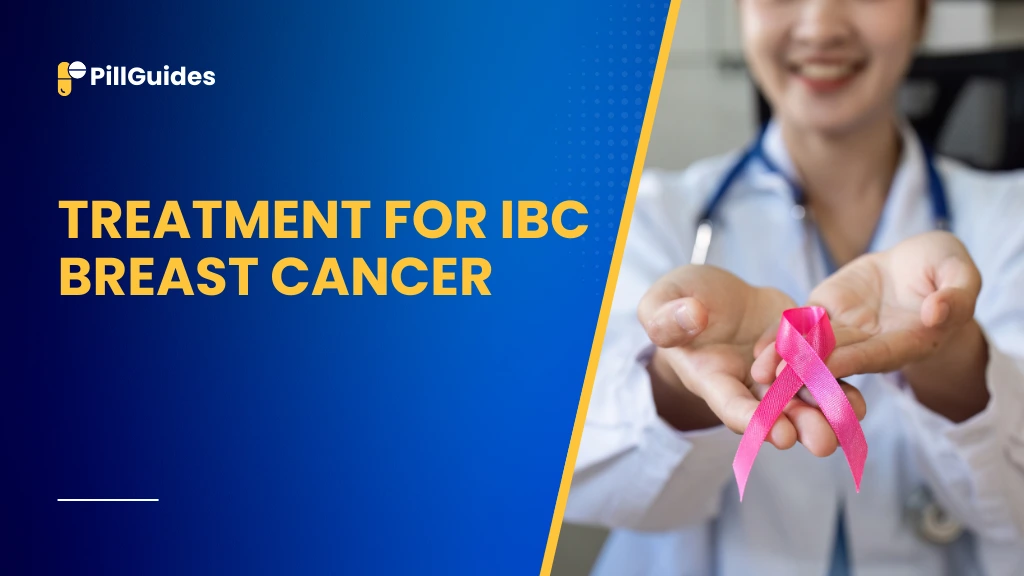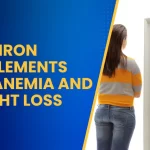Inflammatory breast cancer (IBC) is unique in its aggressive form of breast cancer. It progresses quickly and seldom presents as a visible lump, unlike other forms of breast cancer, and so it is difficult to detect early. Instead, it often comes in the form of redness, swelling, and tenderness of the skin of the breast and that’s how it can be easily mistaken for an infection.
One reason why the diagnosis of IBC breast cancer should be prompt and treatment is efficient. In this article we will look at most advanced and most efficient treatment options for IBC breast cancer, how early diagnosis is possible, and new therapies that are helping save the lives of patients.
What is Inflammatory Breast Cancer (IBC)? Symptoms and Diagnosis
Symptoms of IBC
Inflammatory breast cancer symptoms develop quickly and usually do not present a lump, so initially it can be misdiagnosed. Here are some of the most telltale signs:
- Redness or inflammation of the skin of the breast that continues
- Orange peel thickened skin
- Breast swelling which can rapidly change in size
- If there is tenderness, warmth or pain in the affected area.
- Flattened or inverted nipple
- Swollen lymph nodes in the underarm or under the collarbone
The sooner these symptoms are recognized, the better, as IBC progresses fast, spreading to lymph nodes or other organs.
Diagnosis for IBC Breast Cancer
Diagnosing inflammatory breast cancer usually involves multiple steps:
- Clinical Evaluation: Physicians use redness, swelling, and breast change as indicators for assessment.
- Imaging Tests: Mammograms, ultrasounds, and MRIs examine the breast tissue for abnormalities and can reveal details.
- Core Needle Biopsy: Pathological confirmation of cancer is done by checking a tissue sample.
- Skin Punch Biopsy: This test is done to confirm dermal lymphatic invasion if the skin is thickened.
- Staging Tests: Your latest PET scan, chest X-ray, or CT scan will be evaluated to see if the cancer has spread.
Accurate diagnosis and stage allow for the development of an effective treatment strategy for IBC breast cancer.
Breakthrough Treatment for IBC Breast Cancer
Inflammatory breast cancer is treated with a multi-modal treatment in which systemic treatments, surgeries, and local procedures are used to induce remission. Here are the most common and effective methods used today:
1. Chemotherapy: The First Line of Defense
IBC is often treated with chemotherapy, which is often given before surgery, as part of neoadjuvant therapy. Its main goal is to shrink the tumor so surgery is more effective and prevents cancer from spreading. Some of the most commonly used chemotherapy drugs include:
- Doxorubicin (Adriamycin)
- Taxanes: Paclitaxel and Docetaxel.
- Cyclophosphamide
Adjuvant chemotherapy may also be used after surgery to attack any remaining cancer cells in your body. If this cannot be avoided, then taking the systemic approach will reduce the likelihood of recurrence.
2. Targeted Therapy: Precision-Based Care
Targeted therapies have made a big difference in cases where IBC is HER2positive (about 30 percent of IBC patients). Medications like:
- Trastuzumab (Herceptin)
- Pertuzumab
What these drugs do is put the brakes on HER2, which fuels the growth of the tumor. Compared to standard care, this precision-based care dramatically improves survival rates it is an essential part of the advanced IBC breast cancer treatment.
3. Surgery: Removing the Source of Cancer
Surgery for most cases of IBC is inevitable and consists of a modified radical mastectomy. Surgery for IBC is different than traditional breast cancer cases, where, in addition to taking the entire affected breast, nearby structures, like lymph nodes, are removed to prevent the cancer from coming back. Although sometimes delayed reconstruction is advised following radiation therapy completion, there is usually the option for reconstructive surgery after treatment.
4. Radiation Therapy: Eliminating the Stragglers
When cancer is present in deeper lymph nodes in the armpit away from the breast, post-surgical radiation therapy to the breast and surrounding tissues is critical to eradicating any remaining breast and surrounding tissue cancer cells. No cancer cells are left when high-power beams are directed towards the affected area. In combination with surgery and chemotherapy, radiation therapy provides a large improvement in survival rates.
5. Hormonal Therapy for ER+ IBC
Hormonal therapy can slow down cancer growth when the IBC cancer cells are hormone receptor positive (estrogen and progesterone receptor sensitive). Common hormonal therapies include:
- Tamoxifen
- Aromatase Inhibitors
These medicines block hormones that fuel the growth of cancer cells and provide long-term control of estrogen-receptor-positive cancers.
6. Experimental Therapies & Immunotherapy
New hope for patients with advanced IBC or metastases is emerging approaches such as immunotherapy. Medications like:
- Atezolizumab (Tecentriq)
They are intended to stimulate the immune system better able to combat metastatic tumors. Exciting possibilities are still made possible by clinical trials including genomic testing, CAR-T therapy, and personalized medicine all for individual cancer profiles.
Emerging Advances in IBC Breast Cancer
Outcomes for IBC patients continue to improve to the tune of significant scientific progress. Some recent breakthroughs include:
- Liquid Biopsies: Real-time monitoring of treatment response using noninvasive measures.
- CAR-T Cell Therapy: Using the power of the immune system against cancer, via the immune system’s ability to directly target cancer cells.
- AI-Powered Genomic Profiling: Cancer treatment tools based on genetic mutations of the tumor that can be customized.
They all stress that treatment for IBC breast cancer has moved into a new phase of promise and possibility.
Conclusion
An inflammatory breast cancer diagnosis can be overwhelming, but modern therapies are proving overwhelmingly hopeful. Now patients have access to everything from advanced chemotherapy regimens to precision-targeted therapies and pioneering immunotherapy. Understanding symptoms is an important first step, partner with healthcare professionals quickly and keep your options open because individuals diagnosed with IBC breast cancer can be empowered to stay in remission and out of the fight by recognizing symptoms early, consulting healthcare professionals promptly, and experimenting with new options.
Disclaimer
The content of this blog is for informational purposes only and is not a substitute for professional medical advice, diagnosis, or treatment. Always consult your healthcare provider for guidance specific to your condition.
Read More: Stage 2 Breast Cancer Treatment Timeline: A Complete 2025 Guide
FAQs Treatment for IBC Breast Cancer
1. How is inflammatory breast cancer different and what is it?
IBC is a rare breast cancer that progresses differently than other forms of the disease. Redness, swelling, and a warm feeling in the breast are the most common presentations for this type of breast cancer, unlike other breast cancers which don’t form a lump.
2. Is IBC treatable?
Yes. However, aggressive treatment plans of chemotherapy, surgery, radiation, and sometimes targeted or immunotherapy can bring many patients into remission. Management is critical and depends on early detection.
3. What are the survival rates for IBC?
Survival depends on the stage at diagnosis, the aggressiveness of the tumor, and the treatment taken. Survival is quite much better with modern therapies.
4. If you suspect IBC, should I see a doctor right away?
But if you have any persistent symptoms of redness, swelling, or tenderness of the breast for more than a week, see a doctor. IBC is a very rapid disease and early intervention is essential.
5. What are the side effects of IBC treatments?
Of course, treatments like chemotherapy, radiation, and the like can make you feel fatigued and nauseous, lose your hair, or get in the way of skin irritation. Talk to your oncologist about mitigation strategies for side effects.










